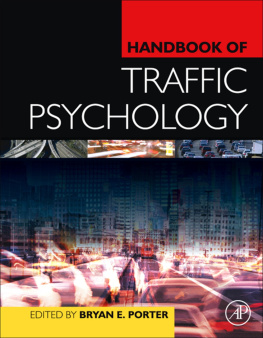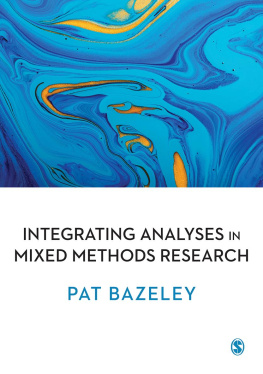Copy Right
Academic Press is an imprint of Elsevier
32 Jamestown Road, London NW1 7BY, UK
225 Wyman Street, Waltham, MA 02451, USA
525 B Street, Suite 1800, San Diego, CA 92101-4495, USA
First edition 2011
Copyright 2011 Elsevier Inc. All rights reserved with the exception of Chapter 32 which is in the Public Domain
No part of this publication may be reproduced, stored in a retrieval system or transmitted in any form or by any means electronic, mechanical, photocopying, recording or otherwise without the prior written permission of the publisher
Permissions may be sought directly from Elsevier's Science & Technology Rights Department in Oxford, UK: phone (+ 44) (0) 1865 843830; fax (+44) (0) 1865 853333; email: /rights for further information
NoticeNo responsibility is assumed by the publisher for any injury and/or damage to persons or property as a matter of products liability, negligence or otherwise, or from any use or operation of any methods, products, instructions or ideas contained in the material herein. Because of rapid advances in the medical sciences, in particular, independent verification of diagnoses and drug dosages should be made
British Library Cataloguing-in-Publication Data
A catalogue record for this book is available from the British Library
Library of Congress Cataloging-in-Publication Data
A catalog record for this book is available from the Library of Congress
ISBN : 978-0-12-381984-0
For information on all Academic Press publications visit our website at www.elsevierdirect.com
Typeset by TNQ Books and Journals
Printed and bound in United States of America
11 12 13 1410 9 8 7 6 5 4 3 2 1
Preface
In compiling the Handbook, I had a vision to place into one work the latest research findings and future questions to be pursued in the field. I wanted the work to reach multiple audiences, including advanced undergraduates learning about applications and methods, graduate students needing the latest reviews and suggestions for research questions, and scholars in the field who benefit from one resource representing the field at-large for ease of reference and background. The final result, I believe, completes the true meaning of handbooka how to resource to know, and do work in, the field. It can even be adopted as a textbook for courses in traffic psychology.
The book's chapters are organized into six main sections: (1) Theories, Concepts, and Methods; (2) Key Variables to Understand in Traffic Psychology; (3) Key Problem Behaviors; (4) Vulnerable and Problem Road Users; (5) Major Countermeasures to Reduce Risk; and (6) Interdisciplinary Issues. Each chapter is a stand-alone resource for readers who want to start with a particular issue or topic. The chapters within each section also have different purposes and, at times, will attract different audiences whose needs vary depending on experience in traffic psychology. The material within is global, coming as it does from contributors representing 12 countries on five continents. There is also a breadth of interdisciplinary perspective, with experts from psychology, engineering, medicine, political science, and public health.
The first section, Theories, Concepts, and Methods, gives readers an overview of traffic psychology as a field (Groeger), theoretical contributions (Fuller), and how to chapters to practice common methods. Casecontrols (Hjar, Prez-Nuez, and Incln-Valadez), self-report (Lajunen and zkan), direct observation (Eby), in-vehicle instrumentation (Klauer, Perez, and McCafferty), simulation (Carsten and Jamson), and crash data set methods (Kweon) are discussed. New students in traffic psychology, or experienced scholars wishing to consider different methods, will particularly benefit.
In the second section, Key Variables, a wide range of variables are explored that provideliterallythe set of those thought to be among the most important to understand. Authors explore neuroscience contributions to driving (Glendon for young drivers; Schultheis and Manning for older drivers), which are becoming very important to the field and its future potential. Visual search patterns (Crundall and Underwood), social, personality, and affect (Hennessy), and mental health impacts (Taylor) are explored. Finally, the person, environment, and culture (zkan and Lajunen) and human factors (Oppenheim and Shinar) impacts are reviewed. In these chapters, readers can review the latest information and research questions from within a person through to that person's interactions with the larger social system.
The third section will be very popular with readers interested in particular behaviors. Here, chapters provide what is the latest knownand unknownabout major problem behaviors leading to crashes, injuries, and fatalities. These behaviors are critical for traffic safety at-large, not just traffic psychology. These are safety-restraint use (Vivoda and Eby), impaired driving (Dunaway, Will, and Sabo), speeding (Berry, Johnson, and Porter), running traffic controls (Retting), distracted driving (Regan and Hallett), and fatigued driving (May).
Vulnerable road users are the focus of the fourth section. Traffic psychology and related fields have a significant interest in reducing harm to subgroups of people who are disproportionately harmed on the roadways or who need particular protections that they cannot provide themselves. The field also focuses on those subgroups that disproportionally create roadway problems. This section's chapters review young children and tweens (Will), young drivers (Huang and Winston), older drivers (Freund and Smith), pedestrians (Van Houten), bicyclists (Walker), motorcyclists (Houston), and professional drivers (Rosenbloom).
Traffic psychologists and their colleagues are often called upon to assist in the development and evaluation of countermeasures to reduce roadway risks. The fifth section reviews major countermeasures that have received the most attention to date. Specifically, driver education and training (Keskinen and Hernetkoski), persuasion and motivational messaging (Anderson), and enforcement (Porter) are discussed. Readers in the field, or those practicing in general transportation sciences and policy, will find these chapters useful in their discussions about what questions and countermeasures may or may not be appropriate to address their needs.
Finally, the sixth section provides interdisciplinary perspectives. Readers will find how traffic psychology intersects with public health (Sleet, Dellinger, and Naumann) and public policy (Elvik). Environmental protection by reducing personal vehicle use in favor of public transport or other mode choices has a growing research base (Stradling). Also, traffic psychology's role to assist worldwide injury prevention, with Africa as an important and critical example, is outlined (Peltzer).











